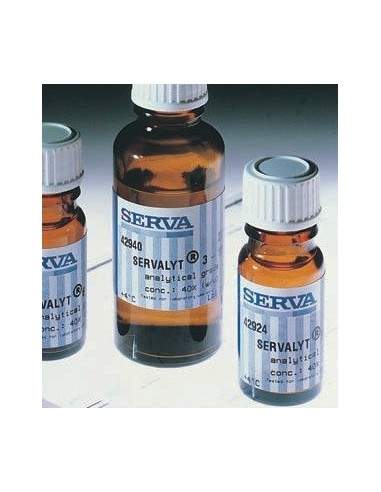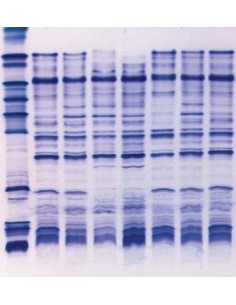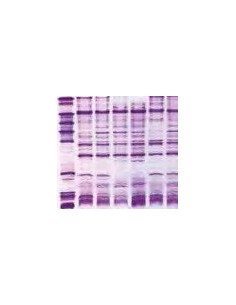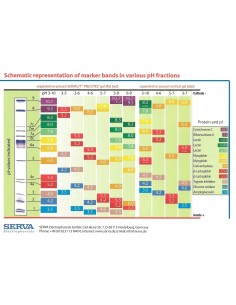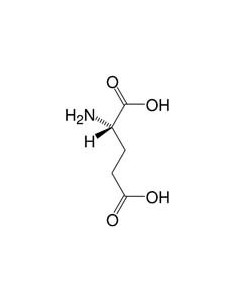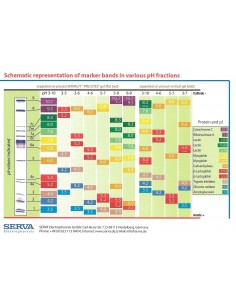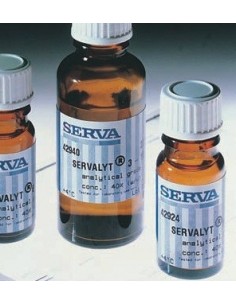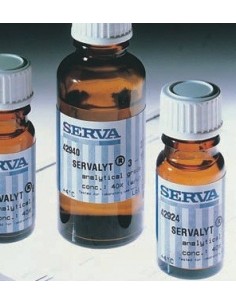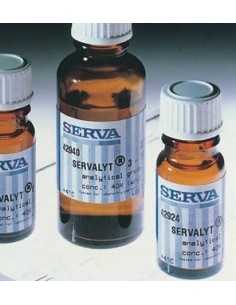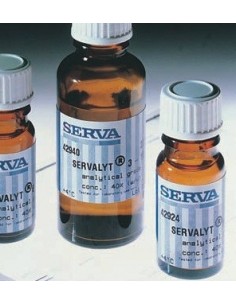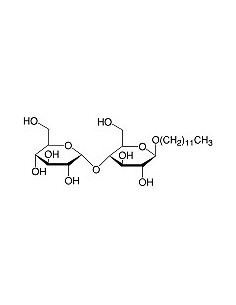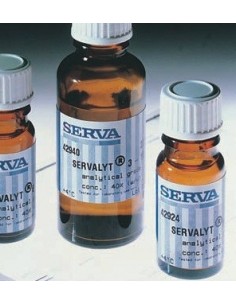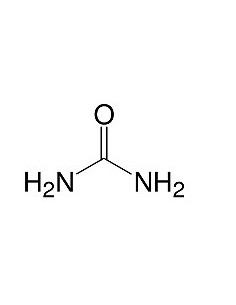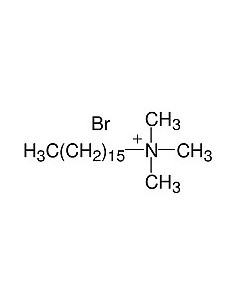Ampholytes 6-9, Servalyts
42913.01
$266.56
Ampholytes 6-9, Servalyt 6-9
- Servalyt Ampholytes Provide High Resolution
- Clean Separations
- Clear Background
- Two Available: 10ml & 25ml
Ampholytes 6-9 (Servalyt 6-9)
Carrier ampholytes pH 6-9
Applications: Isoelectric focusing, capillary electrophoresis, free-flow electrophoresis
SERVALYT 6-9 carrier ampholyte are useful in identifying acidic and basic isotypes in purified protein samples such as monoclonal antibodies or other biosimilar protein products.
Supplied as 40 % aqueous concentrate and sterile filtered (0.2 μm). If stored at 4 °C and unopened shelf is up to 3 years. The common working concentration is in the range of 3 % to 5 %. Excellent for high resolution of acidic protein in isoelectric focusing (IEF), capillary isoelectric focusing (cIEF) and free flow electrophoresis applications.
Benefits:
- Available Two Sizes: 10 ml & 25ml
- High Resolution
- Widest Range Available
- Fast Staining and Clear Background
- Ready to Use or Blending
- 3 year shelf life
Comparison of different brands of carrier ampholytes
Using an ampholyte pH 6-9 in isoelectric focusing (IEF) offers several applications and benefits, including:
Comprehensive separation of proteins with diverse pI values: The pH range of 6-9 allows for the separation of proteins with a wide range of isoelectric points (pI). It covers the slightly acidic to slightly basic region, facilitating the analysis of proteins with different pI values within this range.
Versatile analysis of proteins: Using an ampholyte pH 6-9 in IEF provides versatility in protein analysis. It accommodates proteins with varying acidic and basic characteristics, making it suitable for a broad range of sample types and protein subsets.
Enhanced resolution and selectivity: The use of an ampholyte pH 6-9 enables high-resolution separation of proteins with diverse pI values. The pH gradient established by the ampholytes facilitates the migration and focusing of proteins at their respective pI positions, resulting in well-resolved and distinct protein bands. This improves the accuracy of protein identification and characterization.
Analysis of protein isoforms and modifications: Many proteins exist in multiple isoforms or undergo post-translational modifications, leading to variations in their pI values. Using an ampholyte pH 6-9 in IEF allows for the separation and identification of these protein isoforms and modified forms. This enables researchers to study protein heterogeneity, functional implications of isoforms, and the impact of modifications on protein behavior.
Biomarker discovery and disease research: IEF using an ampholyte pH 6-9 finds relevance in biomarker discovery studies and disease-related research. By comparing protein expression profiles between different samples, potential biomarkers associated with specific diseases or physiological conditions can be identified. The broad separation capabilities of pH 6-9 can help detect disease-specific protein alterations and aid in diagnostic and prognostic applications.
Integration with other techniques: IEF using an ampholyte pH 6-9 can be integrated with other techniques for comprehensive protein analysis. Following the separation in the first dimension, the resolved proteins can be further analyzed using techniques such as gel electrophoresis, Western blotting, or mass spectrometry, enabling a multi-dimensional approach for protein characterization.
Proteomics research: The use of an ampholyte pH 6-9 in IEF is valuable in proteomics research. It allows for the systematic analysis of protein expression patterns, modifications, and isoforms within the pH range of 6-9. By studying proteins with pI values in this range, researchers can gain insights into cellular processes, disease mechanisms, and protein-protein interactions.
In summary, using an ampholyte pH 6-9 in IEF offers comprehensive separation, versatile analysis, enhanced resolution and selectivity, characterization of protein isoforms and modifications, biomarker discovery potential, integration with other techniques, and finds application in proteomics research and disease-related studies.
No reviews

